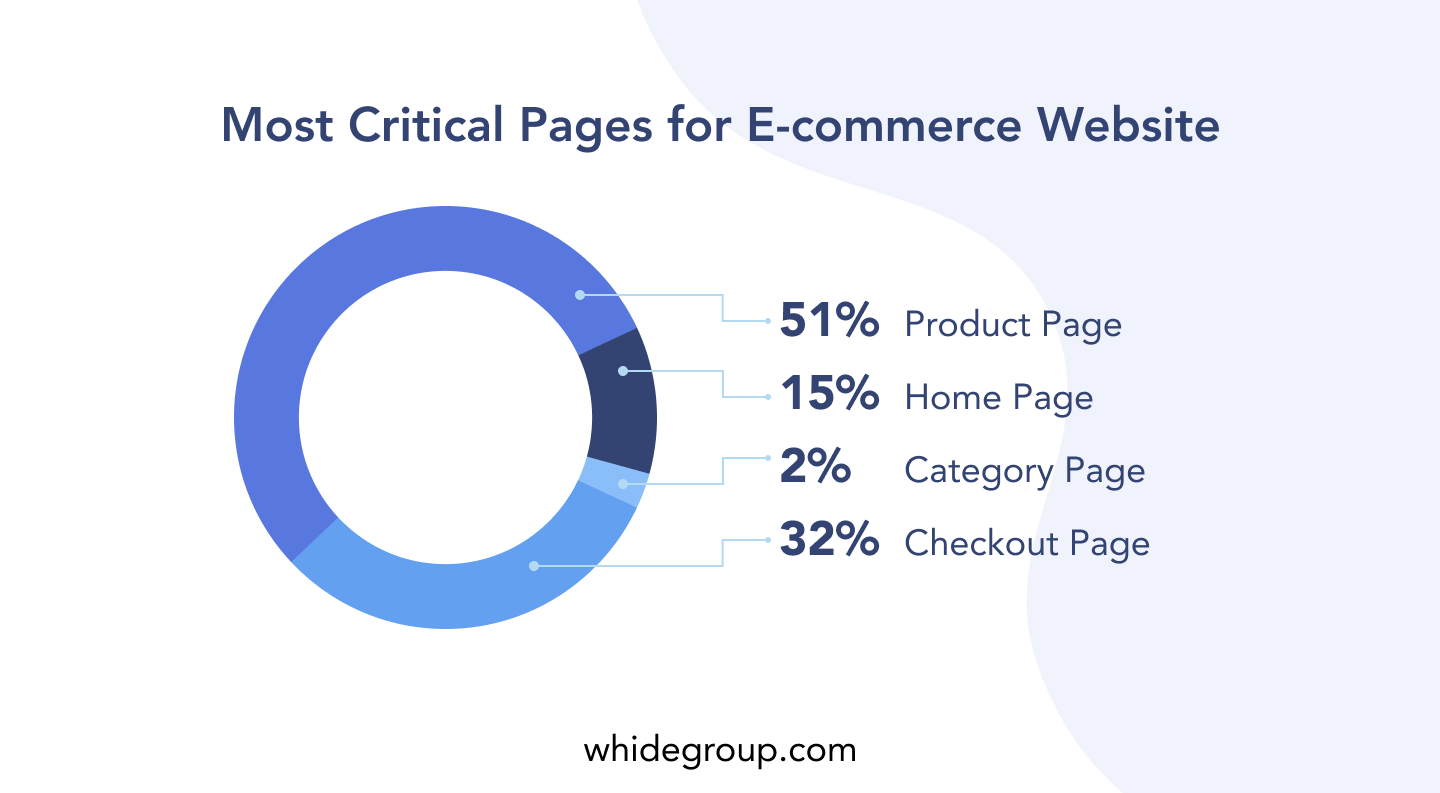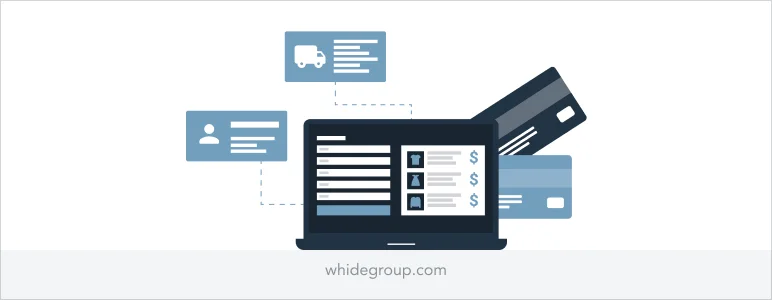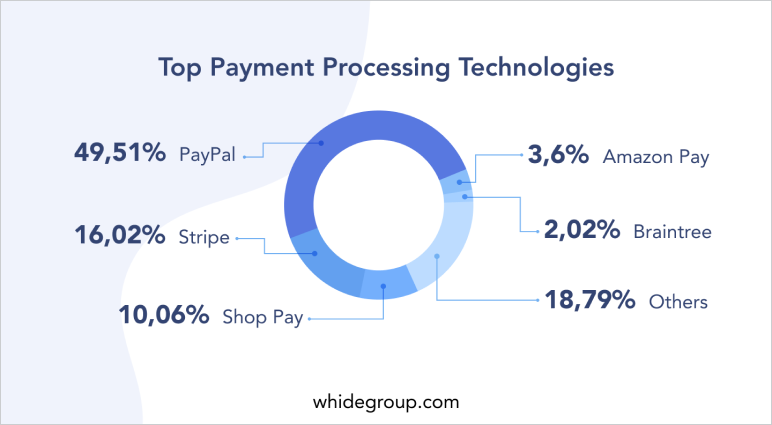E-commerce Website
Cost to Expect
in 2024

E-commerce Website
Cost to Expect
in 2024
Price is critical when it comes to e-commerce site development. However, there is no clear guide for business owners on how to calculate the cost of an e-commerce website and what aspects they should take into account. In this article, we will comb through every little component that should be included in the average e-commerce website and estimate a price for its implementation. This guide is applicable to both small-to-medium sized and enterprise e-commerce businesses that want to calculate their e-commerce website cost.
An average e-commerce website has a complex structure and consists of many elements. Unfortunately, it is impossible to give a precise time and cost estimation without knowing the requirements to the functionality and design. That’s why we will review average e-commerce website costs.
Table of Contents
ToggleContent management system (CMS) is the foundation of every e-commerce store. You can find various e-commerce solutions: free and premium, light-weight and heavy, for small stores and enterprises. In this article, we’ll focus on Magento and Shopify e-commerce solutions. We’ll focus on these for two reasons – first, they are the most popular, with over 34% of the global market share.

Second, at Whidegroup, we specialize in both of these e-commerce solutions. We have come to learn each little detail, nuance, and peculiarity of them, thus providing our clients with the best e-commerce services and solutions possible.
Both platforms offer several plans. Because of this, business owners of any scale will be able to find a perfect solution for themselves. So, let’s clarify how much does it cost to build an e-commerce website on each of these platforms.
This open-source e-commerce platform currently offers three options to choose from to run your e-commerce store:
This SaaS e-commerce solution provides customers with four plans:

The second step after choosing a platform that will add up to your e-commerce website cost is a hosting selection. Take your time to choose fast and reliable hosting that suits your website requirements fully. Hosting solution providers are numerous, and below we review three that are considered to be the most popular ones:
Every hosting provider mentioned above has various plans – from cheap and cheerful to more serious and costly. However, we strongly believe that light plans are not suitable enough to run an e-commerce business of any scale, so we wouldn’t waste your time on it. Instead, we recommend choosing the plans with more features, better support, and less downtime percentage.
Every industry has a cluster of webpages that are considered to be the most critical. E-commerce is no exception here, and the list of important pages for e-commerce includes product page, homepage, category page, cart, and checkout. Below you can see the traffic breakdown for the pages mentioned above and estimate their importance.

The most common way to measure the cost for page development is by using an hourly estimation. A developer’s hourly rate varies from $50 to $200 per hour. So, let’s look at how long it takes to develop each page mentioned above and how the e-commerce website cost can be calculated:
By checking the product page, the customer gets an impression of a particular product and makes a decision about making a purchase. The time needed for custom product page development is on average 40 hours. These include:

This page is perfect for placing information about you, your business, and the products you sell. With this display, you’ll grow your authority and trust in the eyes of your customers. Homepage development is commonly estimated to run 30 hours. The activities implied in this process include:
If you sell many products, it’s best to categorize them to make the shopping experience more convenient for your customers. Category page development on average takes 32 hours.
Shopping cart page is one of the vital stages of the common e-commerce conversion funnel every customer has to pass. Having a non-user-friendly or confusing shopping cart, results in a high cart abandonment rate. Responsive and user-friendly shopping cart page setup usually takes about 12 hours, and consists of:
The checkout page requires particular attention from you since it’s the final online touchpoint between your brand and your customers. Thus, the impression it leaves must be perfect! The best checkout is a frictionless one, and the best way to make checkout frictionless is to implement a custom checkout process. You can also consider an option to optimize an already existing checkout page.On average, custom checkout page development takes up to 40 hours while optimizing an existing one takes around 12 hours. Average checkout setup process consists of the following steps:
The final time estimation and cost depends on the flexibility of the platform you use and the opportunities it gives you in terms of checkout page customization.

In addition to the development and customization of the pages listed above, it is also necessary to lay additional time that is needed for:
When it comes to the e-commerce website design cost – it all depends on whether you prefer to use a ready-made theme or implement a fully-custom design, and the price difference between these two options can be dramatic. Let’s review these in more detail:
To date, the most popular e-commerce payment solutions are PayPal, Stripe, and Shopify Pay. Together they own over 75.9% of overall market share. All of them have no setup fees and charge only for successful transactions.

Popular payment processing technologies in more details:
In our experience, we can say that customers are most interested in implementing such payment solutions as PayPal, Klarna, Sage Pay and Stripe, considering them to be both safe and trustworthy.

While making any estimate, there’s a risk to encounter pitfalls that can make a significant impact on the ultimate e-commerce website cost. These pitfalls are the following:
In this article, we’ve reviewed the e-commerce website cost – the aspects it depends on and its components. We also covered possible problems to look out for.
However, this guide, even with its detail and accuracy, can’t necessarily cover all the aspects of e-commerce site cost. You should keep in mind that a precise e-commerce website cost estimate is impossible without knowing every requirement for your site. Thus, in order to get a precise project estimate, we recommend that you drop us a line and include all the details of your project. We look forward to working with you!
Share This Article

 Magento Website Development in 2024: Your 7-Step Guide to Success
Magento Website Development in 2024: Your 7-Step Guide to Success
Thanks for the blog. well you have detailed explain the cost of ecommerce.
It’s exhausting to seek out knowledgeable folks on this subject, however you sound like you already know what you’re speaking about! Thanks